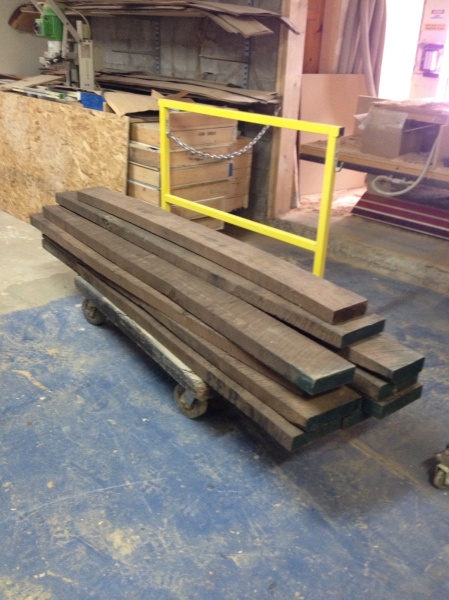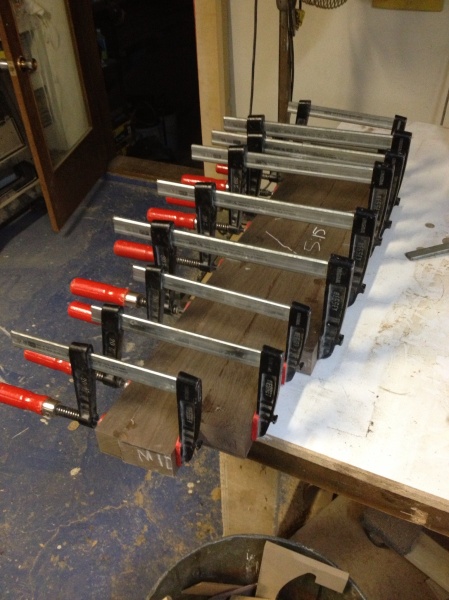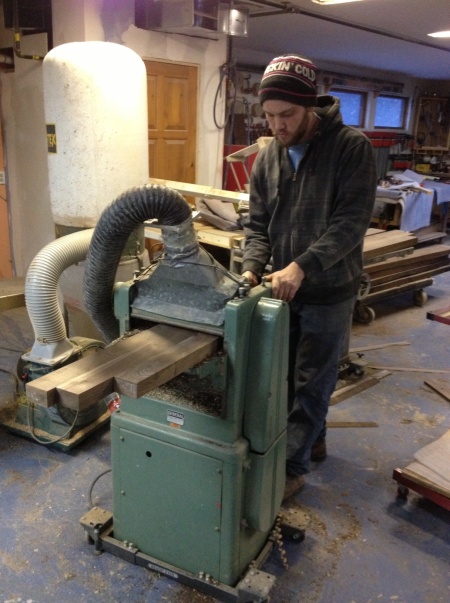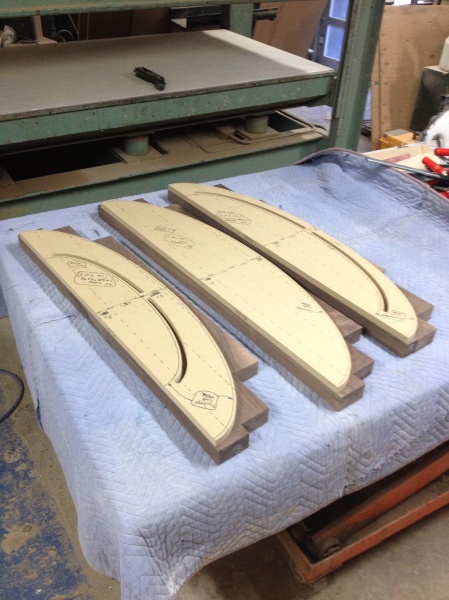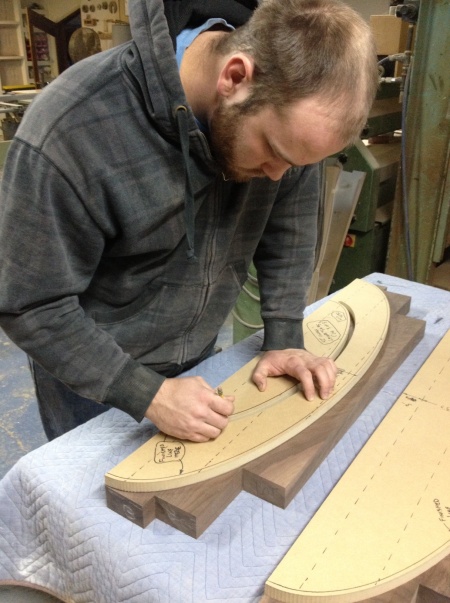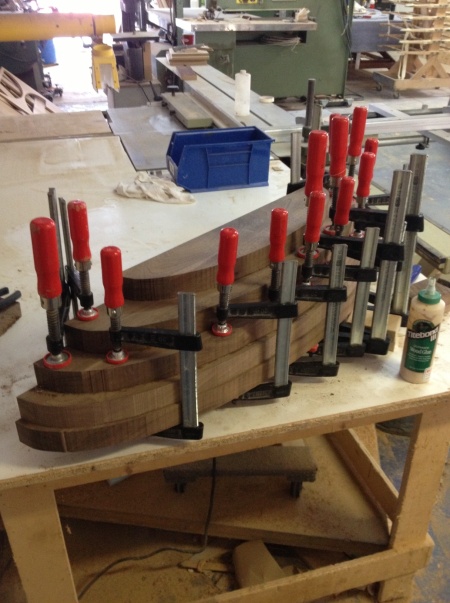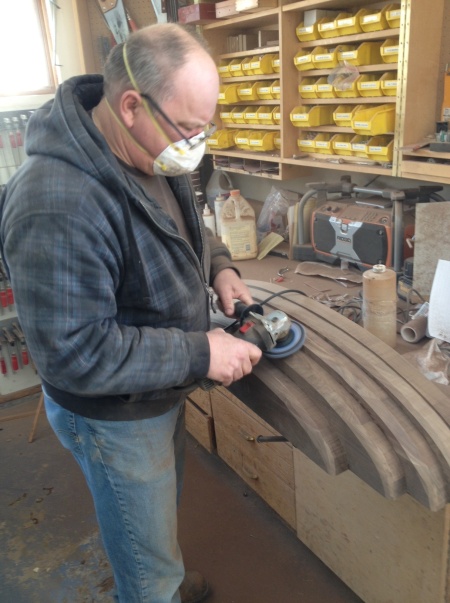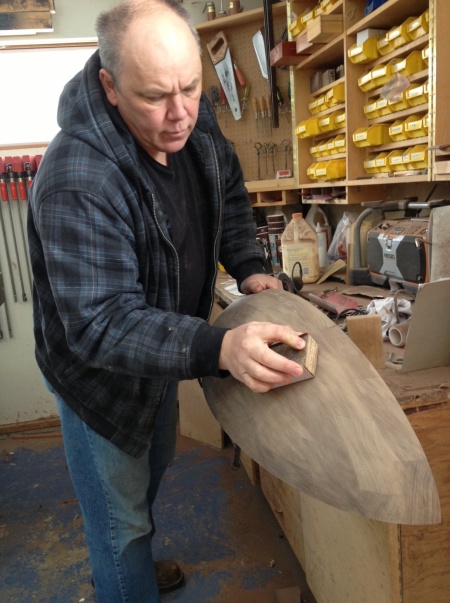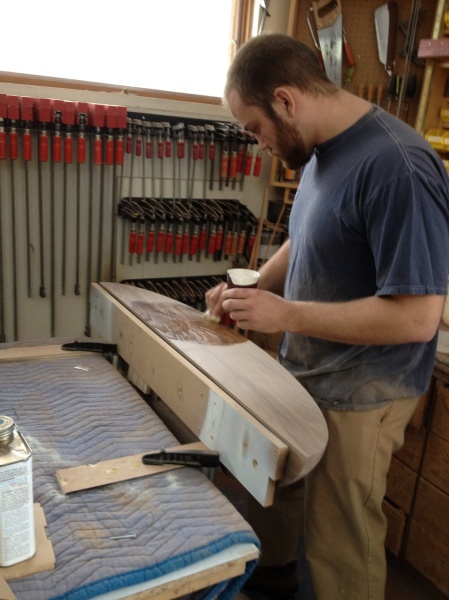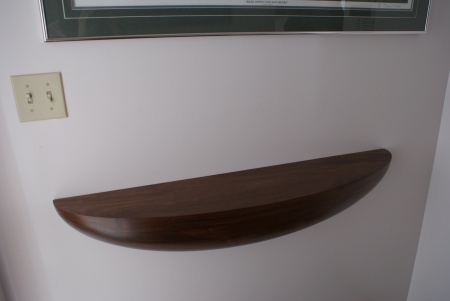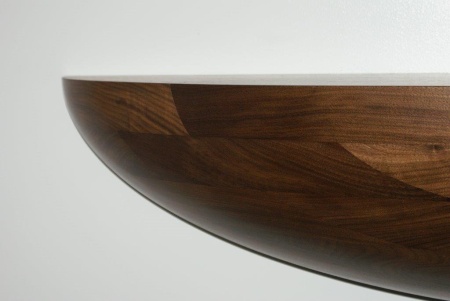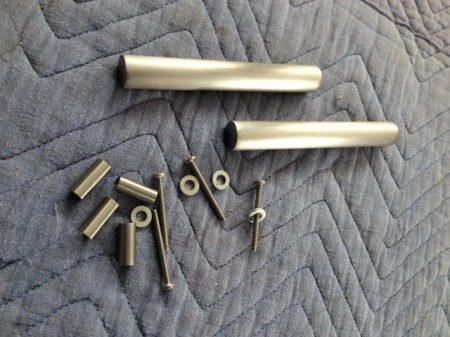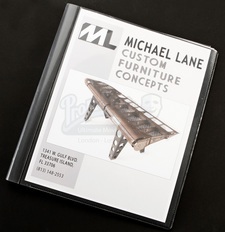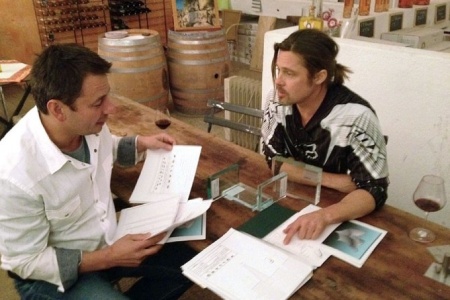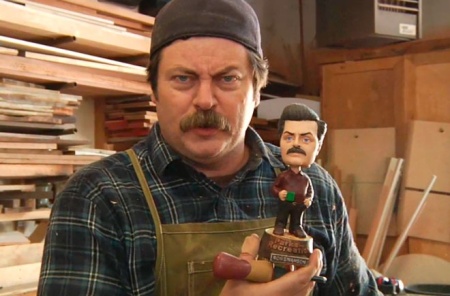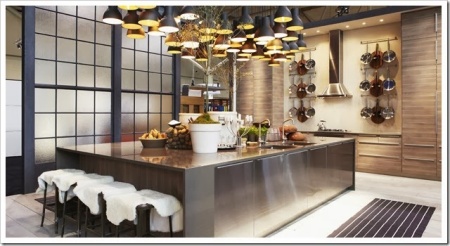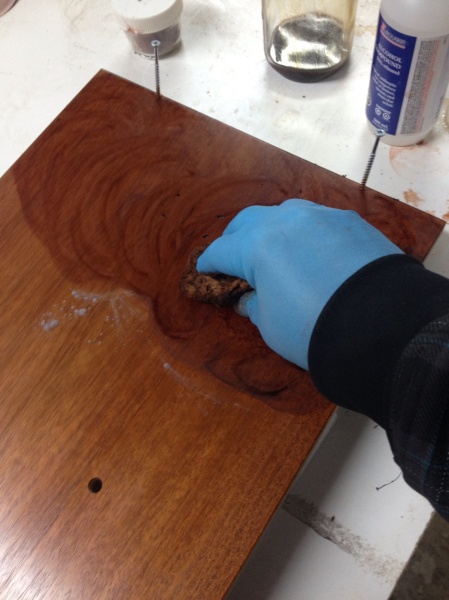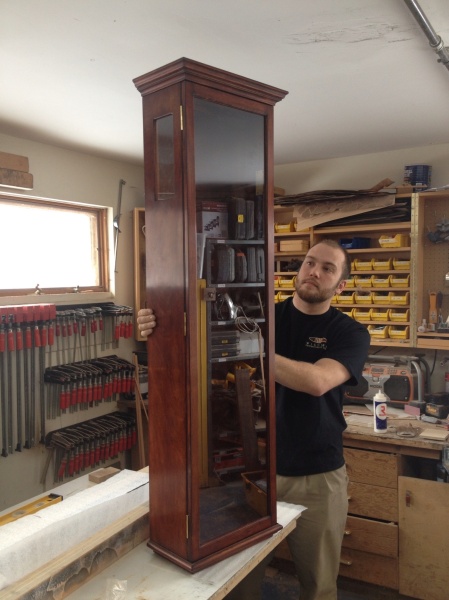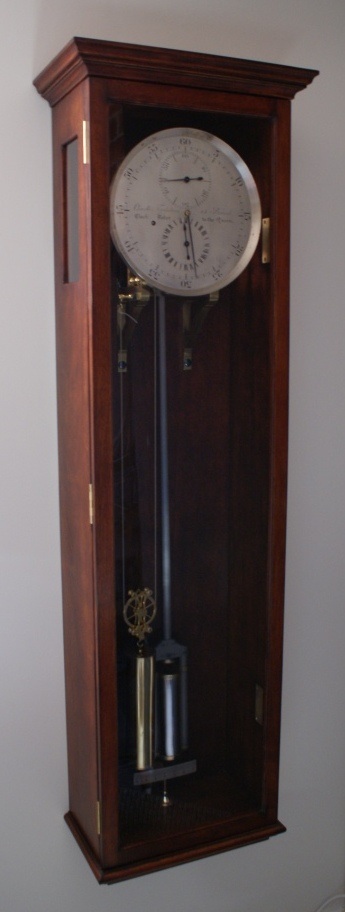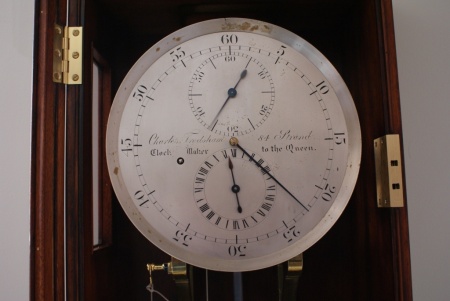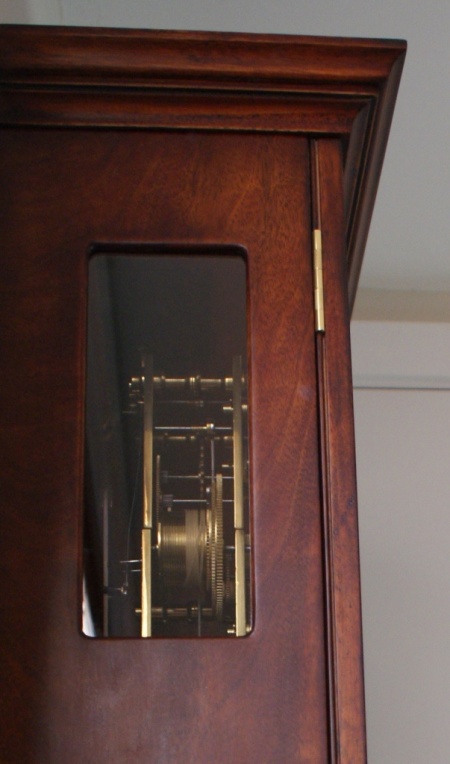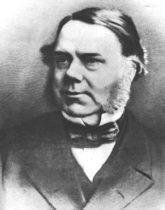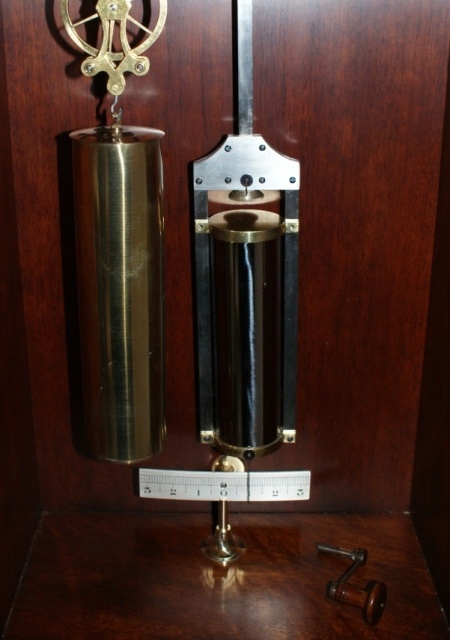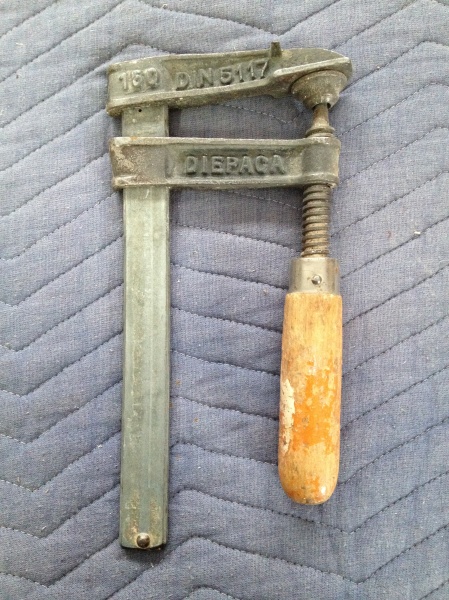The story behind the creation of my Whale Tail Desk was published in issue #79 of Canadian Woodworking Magazine, in August/September 2012.

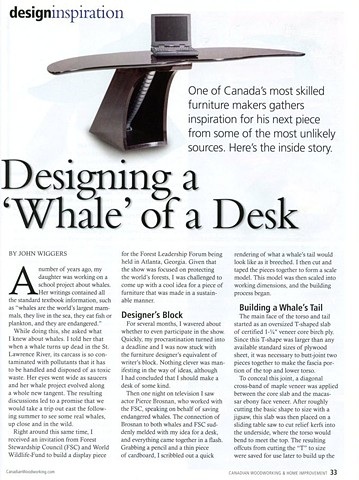
What follows is the content that was submitted for publication.

In the Autumn of 2001 my daughter was working on a school project that had to do with whales. Her writings contained all the standard textbook information available on these creatures, i.e. “whales are the world’s largest mammals; they live in the sea; they eat fish or plankton, and they are endangered.”
After reading her project to me, she asked what I knew about whales. I told her that when a whale turns up dead in the St. Lawrence River it’s carcass is so contaminated with pollutants that it has to be handled and disposed of as toxic waste. Needless to say, her eyes went wide as saucers and her whale project evolved along a whole new tangent.
That conversation made me wonder about what it is that our schools are teaching our children. Or, rather, what it is that our schools are not teaching.
My daughter and I ended up talking a great deal about whales, and out of those discussions came a promise that the following summer we would take a trip out east to see some real whales, up close and in the wild.
Not long after this discussion I received an invitation from World Wildlife Fund to build a showcase exhibit for the inaugural “Forest Leadership Forum” to be held in Atlanta, Georgia in April, 2002. Given that the show was focussed on protecting the world’s forests, I was challenged to come up with a cool idea for a piece of furniture made of FSC certified wood.
For several months I wavered on the idea of whether or not to even participate in the show, because after 9/11 the thought of flying anywhere wasn’t holding much appeal for me.
By early 2002 I was still undecided about whether to participate, but now faced a deadline. I was stuck with the furniture designer’s equivalent to writer’s block. Nothing clever was manifesting in the way of ideas, although I had concluded that my furniture piece should be a desk of some kind.
Then one night I’m watching television and there’s a program on about saving whales, and I see the actor Pierce Brosnan speaking on behalf of the whales.

I was already familiar with Brosnan because at that time he was also a spokesperson for FSC.

The connection of Brosnan to both whales and FSC suddenly melded with my idea for a desk, and everything came together in a flash: FSC + Whale + Desk.
Grabbing a pencil and a thin piece of cardboard I scribbled out a quick rendering of a desk based on what a whale’s tail would look as it breeched in preparation for a deep dive. Cutting this out with scissors I then Scotch taped the pieces together into a crude scale model. The result was an actual miniature prototype, and the whole process probably took no more 15 minutes to do.
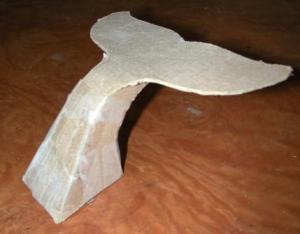
This model was then scaled into working drawings, and the woodworking process began. The main face of the torso and tail started as an oversized T-shape slab of 1-1/4″ veneer core ply that was cross laminated with Macassar Ebony veneer. Relief kerfs were cut into the underside for bending the curve. Plywood offcuts were used to make elongated L-shaped vertical gables, with the 1″ ply floor set into dadoes.
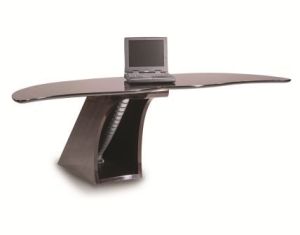
An anthracite grommet was inset into the top, to allow wiring to pass through to the vertebrae wire management column running vertically inside the torso of the desk. For stability the desk was engineered to be secured to the floor with lag bolts.
After a thorough sanding the exposed surfaces were finished in a high gloss low-VOC polyester finish to enhance the grain and give a glossy “wet look” to emulate a whale rising from the water.
The finished Whale Tail Desk was displayed at the “Forest Leadership Forum” in late April, 2002 along with a custom made Andiroba Credenza crafted from the same wood and finish. These pieces are both now part of a private collection in Moscow.
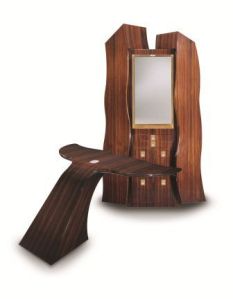
A few months later our family travelled east to New Brunswick and took a long ferry ride to a remote island called Grand Manan, which lies just off the coast of Maine. We arrived on the island on August 6th and had advance reservations to go on a whale watching tour the following morning.
As we travelled around the island I soon learned from the locals that whale watching was not an exact science. Even in optimal summertime conditions such tours are highly dependent on the weather, the seas and the fog. I was told that in the previous 2 weeks hardly any tours had managed to make it out to sea because of heavy fog. And even when boats did make it out, there was no certainty of even seeing a whale – let alone seeing one up close.
I now felt concern that expectations for the trip might not unfold as planned. We had a wedding to attend in a couple of days, and our only opportunity to see whales would be the following morning. My daughter in particular was excited at the prospect of seeing a whale, and I did not wish to see her disappointed.
That night I took a walk to a small rise of land overlooking the sea. I prayed for good weather and silently called out into the darkness – asking for a whale to make an appearance the following day.
We arose before dawn and made our way to the harbour where a small converted lobster boat took us into the Bay of Fundy, to an area where whales traditionally feed. Luckily for us, the weather, the fog and the seas were all working in our favour, and conditions were nearly perfect.
After a bitterly cold 2 hour ride, the boat’s captain spotted a pod of 6 or 8 whales on the horizon. He slowly eased to within about 1/2 mile of where these whales were, and shut off his engine. Now we had to wait, with cameras ready, scanning the horizon in anticipation of the whales coming to the surface. We didn’t know when, or where, these creatures might appear.
For the next 20 minutes we enjoyed sporadic sightings of whales in the distance. These massive creatures would suddenly and unexpectedly emerge from the depths, then crash back into the sea with huge plumes of water and spray. Everyone was crowded to the starboard side of the boat, methodically snapping off frame after frame of film.
Given the unpredictability of the whales appearing on the horizon, I was snapping through an incredible amount of film in the vain hope that one of these shots might yield an incredible photo. At one point I stepped back from the group to change film when the most amazing and magical thing happened. Unbeknownst to any of us a huge Humpback Whale had quietly surfaced behind the boat. This whale didn’t make a noise, and not one of us even noticed he was there.
As I busied myself with changing my film an odd feeling suddenly came over me. Casting a slow sidelong glance over the stern I found myself looking – no more than 10 feet away – right into one of eyes of this massive creature. In one brief moment I felt the whale say to me, as if telepathically, “you asked for me to appear. Here I am.” Needless to say, as soon as I announced the whale’s presence behind our boat everyone stampeded to the back for a better look.
The feeling of being small and powerless was overwhelming. Humpbacks can grow to a size of 40 tons, and if he wanted to this whale could easily have flipped our boat like a cork in the water. But this was not how things unfolded.
It was as if this whale had been waiting for us to show up, and he was floating patiently in the water until he was sure he had our undivided attention.
He slowly raised the top of his bumpy head out of the water, as if to confirm with his own ancient eyes that we were all watching. He then exhaled a huge, bushy spout of misty air with a sound not unlike that of an elephant’s trumpet. And let me tell you, after a lifetime of eating seafood that fellow could definitely have used a breath mint. Children were giggling at how bad his breath smelled.
But the best was yet to come, and the only way to describe it would be to say that this whale grabbed this moment to, literally, seize the proverbial stage and ham it up for our cameras.

It was a most amazing few minutes of time, during which this wild mammal – of its own accord – decided to approach our boat in a manner that gave us both the time and the angles necessary to take some absolutely phenomenal photographs. It would not be an exaggeration to say that this whale was probably posing for some of the shots.
On our long ride back to the harbour I considered what might have motivated such an untamed creature to behave in this manner. I know that whales are highly intelligent, so on some instinctual level this individual would probably know that the greatest threats to its survival (i.e. pollution, collisions with ships, entanglement in fishing nets, and slaughter by commercial industry) all come from humans.
In spite of this, this whale took incredible risk to reach out and connect with us.
Perhaps, deep down, it was because this whale also realises that as much power as Man has to destroy, Man also has the power to change – and to protect. And maybe through connecting with us, this whale is also trying to secure his own future survival by sharing with us that feeling of oneness with him.
It would be easy to dismiss this magical moment was an isolated incident, a coincidence, or a figment of my imagination. But I do not believe this to be the case.
When we arrived on Grand Manan the day before, there was a story circulating amongst the locals about a Humpback Whale and her calf which had become entangled in fishing nets earlier in the week. Such entanglement is a guarantee of certain death for a whale, especially calves. To the amazement of the locals these two wild mammals instinctively swam right up to a research vessel and waited patiently on the surface of the water while deckhands used knives to cut away the netting. Somehow these whales intuitively knew what they needed to do in order to survive.
Life always finds a way, and we should never underestimate the magic at work in Nature.




